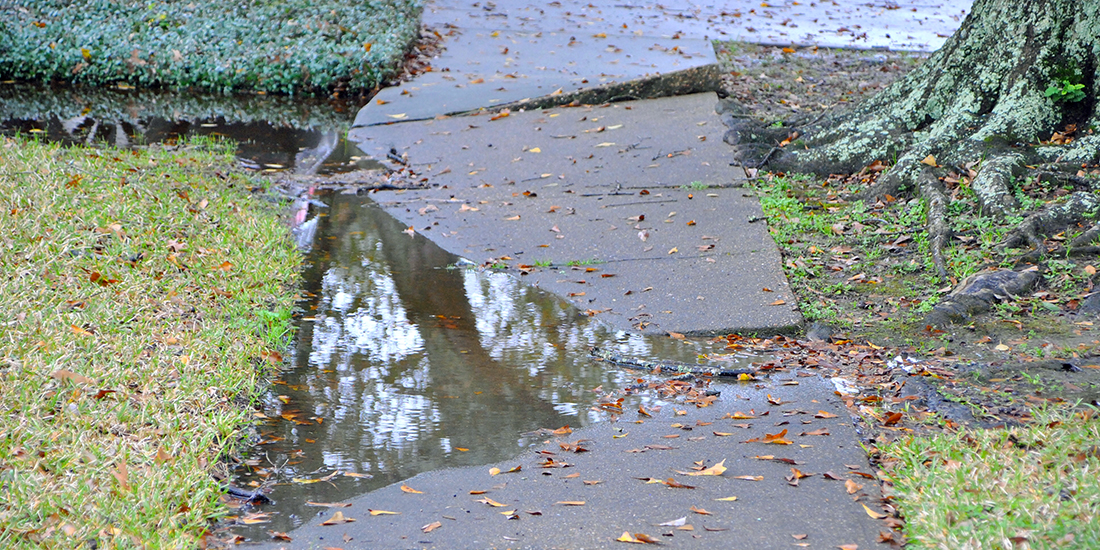
Q: We recently noticed that part of the concrete walkway connecting our driveway with the front door has begun to tilt slightly in one direction. Is there anything we can do to make it level again without breaking the bank?
A: Sinking or uneven concrete can be dangerous. If you’ve ever tripped over an uneven section of sidewalk or slipped on ice formed in settled areas of your driveway, you know the risks firsthand. Concrete issues can impact the safety of your home, as well as its value; ignoring them can be a recipe for severe structural damage and serious injury.
Concrete is a very strong, durable material. After all, it’s the building material of choice for heavily trafficked spaces, from airport runways and sidewalks to driveways and foundations. However, for all its strength and usefulness, concrete has a finite lifespan.
Over time, concrete slabs can suffer a variety of problems, including sinking and unevenness, breaking and chipping, surface pitting, flaking, and deterioration. With our wet northwest winters, the soil under concrete slabs can become saturated and soft or wash out completely. The risk becomes higher when the soil below the slab is poorly compacted.
Fortunately, there is a fantastic solution for lifting and leveling sinking concrete: polyurethane foam. There are many polyurethane products and methods on the market. For both price and effectiveness, I recommend PolyLevel.
Whatever product you use, the polyurethane foam method takes the old-school concept of mudjacking and updates it with the latest technology and techniques. Rather than using a mixture of concrete and mud, this method uses high-density, lightweight, structural-grade polymers to lift, level, and stabilize slabs, making it easy to return surfaces to desired levels.
This method is significantly less expensive than concrete replacement and has numerous advantages over mudjacking: smaller injection sites, no messy concrete “blowouts,” negligible added weight to underlying soil, and zero chance of washout. It’s also environmentally friendlier than mudjacking. The foam does not degrade under the slab, so there is no need to worry about contamination of soil or groundwater with dangerous compounds.
Polyurethane foam is strong and permanent. It is used in many major commercial projects to lift and stabilize extremely heavy structures and surfaces with much heavier traffic than residential concrete, including roads, bridges, and industrial buildings. An extensive study in 2006 by the Argonne National Laboratory in Illinois concluded that the longevity of rigid polyurethane foam is more than 1,000 years in landfill conditions, a similar environment to the one found under a typical concrete slab.
So if you need to tame out-of-control concrete, polyurethane foam is the environmentally safe, affordable, waterproof, and, perhaps most importantly, permanent solution you’re looking for.
Jim Wiederaenders is a senior design technician at Matvey Foundation Repair, a member of the Master Builders Association of King and Snohomish Counties (MBAKS). If you have a home improvement, remodeling, or residential homebuilding question you’d like answered by one of MBAKS’ nearly 2,800 members, write to homework@mbaks.com.